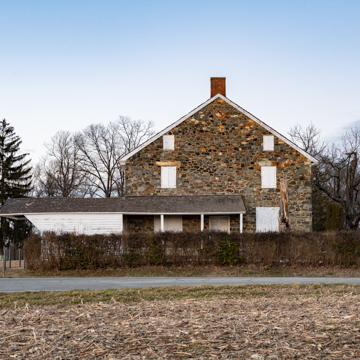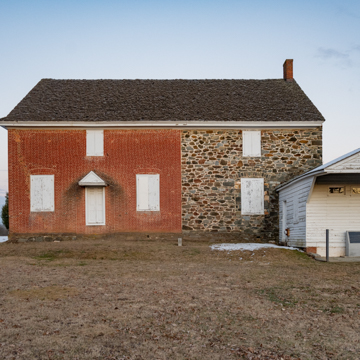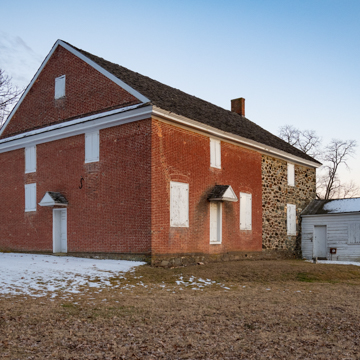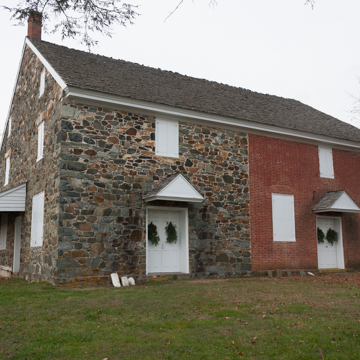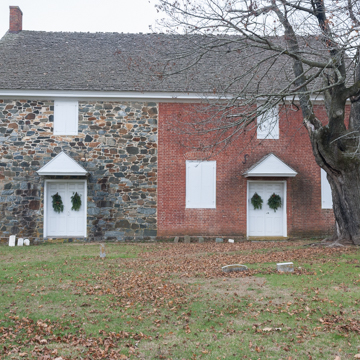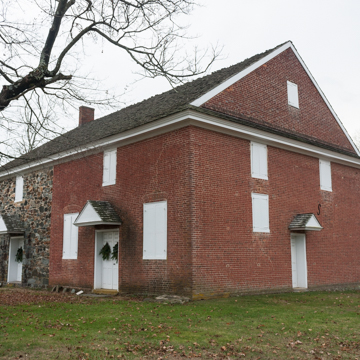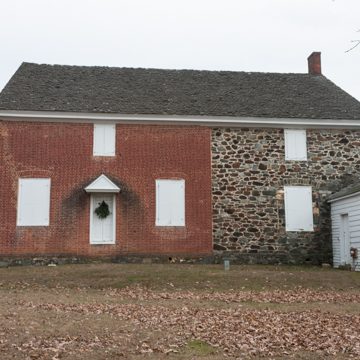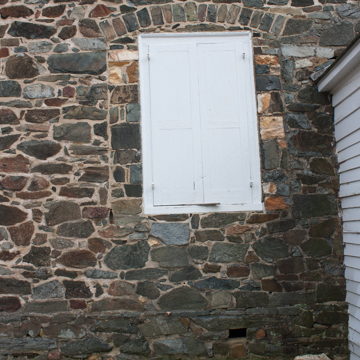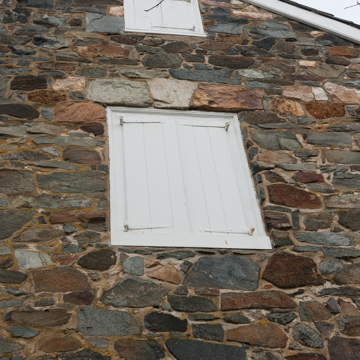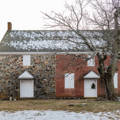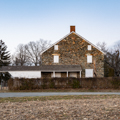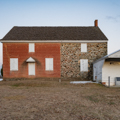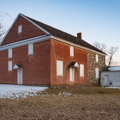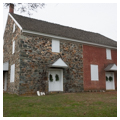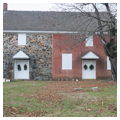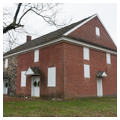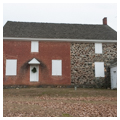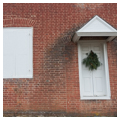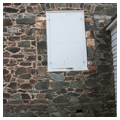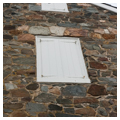The meetinghouse is at the heart of the Nottingham Lots, a Quaker settlement established in 1701 by Pennsylvania proprietor William Penn to lay claim to lands around the disputed border with Maryland. Penn set aside thirty-seven lots that encompassed the meetinghouse, burying ground, and individual house lots. A log meetinghouse was erected under the care of the Philadelphia Yearly Meeting, replaced by the current Flemish-bond brick section that constitutes one of the oldest Friends meetinghouses in the country. Three bays across, the central entrance is covered by the gabled hood indicative of Quaker building traditions. A fire that gutted the interior in 1744 prompted its refurbishing and enlargement by an irregularly coursed stone section that mirrors the form of the original to provide separate but equal men’s and women’s sections. Fire again damaged the interior in 1810, necessitating the replacement of its finishes, including the construction of the massive king post, principal-rafter roof.
References
Blumgart, Pamela James, ed. At the Head of the Bay: A Cultural and Architectural History of Cecil County, Maryland. Elkton and Crownsville, MD: Cecil Historical Trust and Maryland Historical Trust, 1996.
Day, Robert Warwick. “The Nottingham Lots and the Early Quaker Families.” Paper presented at East Nottingham Monthly Meeting, Calvert, MD, September 29, 2001.
Lavoie, Catherine C., and Christopher Densmore. Silent Witness: Quaker Meetinghouses in the Delaware Valley, 1695 to the Present. Philadelphia: Philadelphia Yearly Meeting of the Society of Friends, 2002.
Lutz, George W., III, “East Nottingham Friends Meeting House (Brick Meeting House),” Rising Sun, Cecil County, Maryland. National Register of Historic Places Inventory–Nomination Form, 1975. National Park Service, U.S. Department of the Interior, Washington, D.C.
















